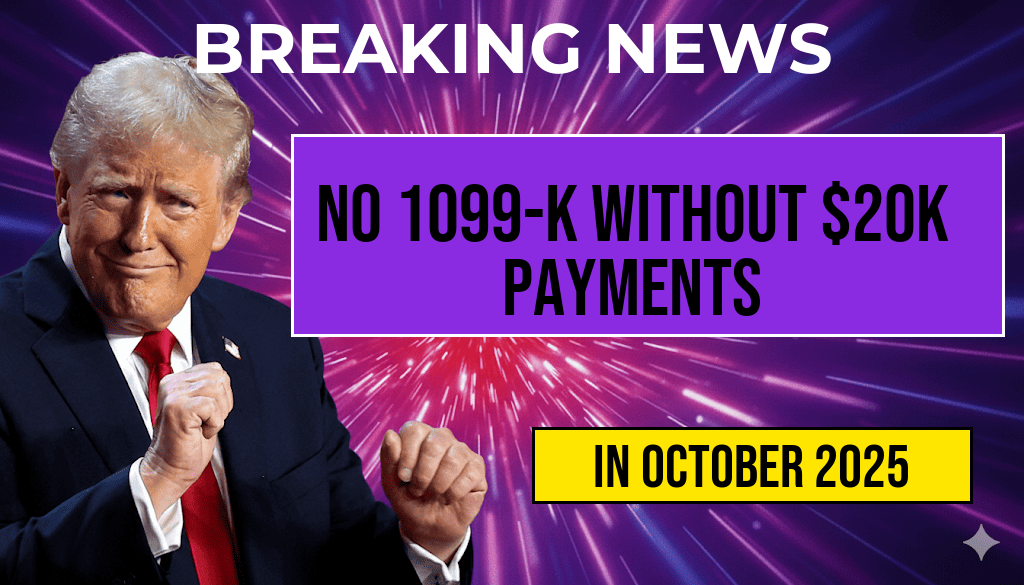For many individuals exploring side income opportunities, understanding the tax reporting thresholds is essential. The IRS has clarified that if you earn less than $20,000 in gross payments through platforms like PayPal, Venmo, or other third-party payment processors, you generally won’t receive a Form 1099-K. This form is used to report payments received for goods and services, and surpassing this threshold typically triggers tax reporting requirements. As a result, casual sellers, gig workers, and small-scale entrepreneurs can operate with less concern about immediate tax documentation until their earnings grow beyond this limit. However, even earnings below the reporting threshold still need to be declared on your tax return if they are taxable income. This policy aims to simplify tax compliance for small-scale earners while maintaining transparency for larger transactions.
Understanding the 1099-K Threshold
What is a 1099-K?
The Form 1099-K is a tax document used by payment settlement entities to report gross payment card and third-party network transactions to the IRS. It helps ensure that income earned through digital platforms is properly reported and taxed. According to IRS regulations, payment processors are required to issue a 1099-K to users who receive more than $20,000 in gross payments and have more than 200 transactions within a calendar year. This combined threshold aims to reduce the burden on small sellers and casual users while capturing significant income streams.
Recent Changes and Clarifications
The threshold was historically set at $20,000 with 200 transactions, but recent discussions have considered lowering the limits to better track small-scale income. The American Rescue Plan Act of 2021 included provisions for potential adjustments, but as of now, the existing threshold remains in effect. The IRS emphasizes that even if you do not receive a 1099-K, you are legally responsible for reporting all income earned, regardless of whether a form is issued. This impacts gig workers on platforms like eBay, Etsy sellers, and freelance service providers who might earn below the reporting threshold but still owe taxes on their earnings.
Implications for Side Hustlers
Small-Scale Sellers and Gig Workers
- Individuals earning less than $20,000 annually through third-party payment processors generally won’t receive a 1099-K.
- Despite the absence of a formal IRS report, all income must be accurately disclosed on tax returns.
- Keeping detailed records of transactions helps avoid issues during audits and ensures compliance.
Impact on Tax Planning
Understanding this threshold allows side hustlers to better plan their tax obligations. Earnings below the threshold might not trigger a 1099-K, but they still constitute taxable income. Consequently, maintaining meticulous records of gross receipts and expenses remains vital. For those approaching the $20,000 mark, proactive planning can help manage potential tax liabilities and avoid surprises during tax season.
Strategies for Small Earners
Record-Keeping Best Practices
- Use accounting software or spreadsheets to track all income and expenses.
- Retain receipts, invoices, and bank statements that substantiate your earning claims.
- Separate personal and business accounts to simplify record management.
Tax Reporting Tips
- Report all income, even if you do not receive a 1099-K.
- Consult with tax professionals to optimize deductions and credits.
- Stay informed about legislative changes that could affect reporting thresholds.
Looking Ahead: Potential Policy Shifts
The IRS and policymakers continue to debate lowering the reporting threshold to capture smaller transactions. Advocates argue that reducing the limit to $600, aligning with certain 1099-NEC reporting rules, could improve income transparency for gig workers and small entrepreneurs. However, critics warn that such changes might impose additional administrative burdens on small sellers and complicate compliance. For now, the $20,000 threshold remains the standard, but those engaged in side hustles should stay alert to legislative updates that could reshape reporting requirements.
Resources for Small Business and Side Hustle Owners
| Resource | Description | Link |
|---|---|---|
| IRS Small Business & Self-Employed Tax Center | Official IRS guidance on tax obligations for small businesses and freelancers. | https://www.irs.gov/businesses/small-businesses-self-employed |
| Wikipedia: Taxation in the United States | Comprehensive overview of the U.S. tax system and reporting requirements. | https://en.wikipedia.org/wiki/Taxation_in_the_United_States |
Frequently Asked Questions
What is a 1099-K form and when is it issued?
The 1099-K form is a tax document issued by payment processors to report payment transactions. It is typically issued when a taxpayer receives more than $20,000 in gross payments and exceeds 200 transactions within a year.
When do I need to report side hustle income to the IRS?
You need to report your side hustle income on your tax return if you receive a 1099-K or if your income exceeds the IRS threshold of $600 from any source, regardless of whether a 1099-K is issued.
How does the $20,000 in payments threshold affect my side hustle?
If your total payments from your side hustle do not exceed $20,000 in a calendar year, you will not receive a 1099-K form, though you are still required to report all income on your tax return.
Can I avoid paying taxes on my side hustle income?
No, you cannot avoid paying taxes on side hustle income. All income earned must be reported, but if your gross payments stay below the $20,000 threshold and do not meet other reporting criteria, a 1099-K may not be issued.
What are the best practices for tracking my side hustle earnings?
It is advisable to keep detailed records of all income and expenses related to your side hustle. Use accounting software or spreadsheets to monitor your payments and ensure accurate reporting, especially if you approach the $20,000 threshold.

Leave a Reply